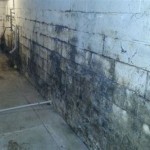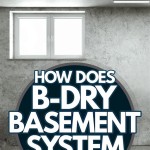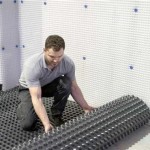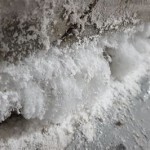How to Finish a Concrete Basement Floor
Finishing a concrete basement floor transforms a cold, damp space into a comfortable and usable living area. This comprehensive guide outlines the necessary steps and considerations for successfully completing this project.
1. Preparation is Key
Proper preparation ensures a smooth, long-lasting finish. The concrete surface must be clean, dry, and free of any debris. Begin by thoroughly cleaning the floor using a stiff broom, vacuum, and degreaser as needed. Address any cracks or imperfections using concrete patching compound and allow ample drying time. Moisture is a significant concern; ensure proper basement waterproofing and address any water infiltration issues before proceeding.
2. Moisture Mitigation
Concrete slabs are susceptible to moisture transmission from the ground. Implementing a moisture barrier is crucial to prevent future problems. Consider using a vapor barrier specifically designed for concrete floors. This thin plastic sheeting is laid directly on the concrete before the finished flooring is installed. Another option is to apply a concrete sealer, which penetrates the concrete and creates a waterproof barrier. For basements prone to significant moisture, consider installing a subfloor system designed for moisture management.
3. Choosing the Right Flooring
Several flooring options are suitable for basement applications. Epoxy coatings provide a durable, moisture-resistant, and easy-to-clean surface. Interlocking tiles offer a DIY-friendly option and are available in various materials like rubber and plastic. Engineered wood flooring, specifically designed for basements, offers the aesthetic appeal of wood with enhanced moisture resistance. Carpet tiles are also a popular choice because they are easy to install and replace if damaged by moisture.
4. Installing a Subfloor (Optional but Recommended)
Installing a subfloor elevates the finished floor slightly above the concrete, providing additional insulation and a more comfortable surface. Common subfloor materials include plywood, oriented strand board (OSB), and foam insulation boards. When using wood-based subfloors, treat them with a sealant to protect against moisture. Foam insulation boards offer superior insulation and moisture resistance, making them a preferred choice for basements.
5. Installing Your Chosen Flooring
The installation process varies depending on the flooring material selected. Epoxy coatings require careful mixing and application according to the manufacturer's instructions. Interlocking tiles typically snap together easily. Engineered wood flooring may be glued, nailed, or floated depending on the specific product. Carpet tiles often have adhesive backing for simple installation.
6. Addressing Uneven Surfaces
Minor imperfections in the concrete slab can often be addressed with a self-leveling compound. This pourable mixture spreads evenly across the floor, creating a smooth surface for the finished flooring. Ensure the compound is suitable for basement applications and follow the manufacturer's instructions for mixing and application. For significant unevenness, consider professional concrete grinding or resurfacing.
7. Insulation Considerations
Basements are naturally cooler than the rest of the house. Adding insulation beneath the finished flooring can significantly improve comfort and energy efficiency. Rigid foam insulation boards are commonly used for this purpose, providing both insulation and a moisture barrier. Reflective insulation can also be used to enhance thermal performance. When installing insulation, ensure it's appropriate for basement applications and does not trap moisture against the concrete slab.
8. Finishing Touches
Once the flooring is installed, add baseboards or quarter-round molding to create a finished look and cover any gaps between the flooring and the walls. Choose moisture-resistant materials like PVC or composite molding. These finishing touches enhance the appearance of the finished basement and protect the edges of the flooring.
9. Ongoing Maintenance
Regular maintenance is essential for the longevity of any basement floor. Sweep or vacuum regularly to remove dirt and debris. Clean up spills promptly to prevent staining or damage. Inspect the floor periodically for any signs of moisture or damage. Addressing minor issues quickly can prevent larger problems from developing.

Diy Basement Floor Stain And Finish 2 Colors Without Etching Youtube

How To Stain Concrete Basement Floor Diy Guide

A Guide To Stained Concrete Basement Floors

Pin On Stained Floors

How To Carpet A Basement Floor Diy Family Handyman

15 Diy Basement Flooring Ideas Affordable Options For Basements

Ask Steve Maxwell How To Fix Concrete Floor Cracks With Paint

The Ultimate Guide To Staining A Basement Floor Semigloss Design

Which Resinous Floor Types Are Most Popular For Garages And Basements Black Rhino Floors

Benefits Of Basement Flooring Finishes Zenith Painting Coatings








